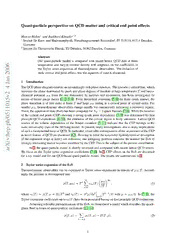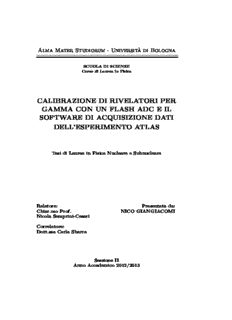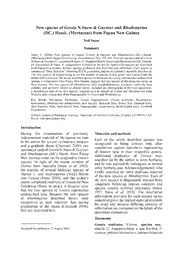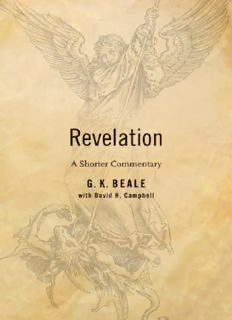
Revelation: A Shorter Commentary PDF
Preview Revelation: A Shorter Commentary
REVELATION A Shorter Commentary REVELATION A Shorter Commentary G. K. Beale with David H. Campbell WILLIAM B. EERDMANS PUBLISHING COMPANY GRAND RAPIDS, MICHIGAN / CAMBRIDGE, U.K. © 2015 G. K. Beale and David H. Campbell All rights reserved Published 2015 by Wm. B. Eerdmans Publishing Co. 2140 Oak Industrial Drive N.E., Grand Rapids, Michigan 49505 / P.O. Box 163, Cambridge CB3 9PU U.K. www.eerdmans.com Library of Congress Cataloging-in-Publication Data Beale, G. K. (Gregory K.), 1949-Revelation: a shorter commentary / G.K. Beale, with David H. Campbell. pages cm ISBN 978-0-8028-6621-9 (pbk.: alk. paper); ISBN 978-1-4674-4201-5 (ePub); ISBN 978-1-4674-4167-4 (Kindle) 1. Bible. Revelation — Commentaries. I. Title. BS2825.53.B43 2015 228′.07 — dc23 2014031223 Scripture quotations are, unless otherwise indicated, from the NEW AMERICAN STANDARD BIBLE®, Copyright © 1960, 1962, 1963, 1971, 1973, 1975, 1977, 1995 by The Lockman Foundation (www.Lockman.org). Used by permission. Contents Preface by G. K. Beale Preface by David H. Campbell Abbreviations Introduction Commentary on the Text 1:1-20 Prologue 2:1–3:22 The Letters to the Seven Churches 4:1–5:14 God and Christ Are Glorified 6:1–8:5 The Seven Seals 8:6–11:19 The Seven Trumpets 12:1–15:4 Deeper Conflict 15:5–16:21 The Seven Bowl Judgments 17:1–19:21 The Final Judgment of Babylon and the Beast 20:1-15 The Millennium 21:1–22:5 The New Creation and the Church Perfected in Glory 22:6-21 Epilogue Index of Scripture and Other Ancient Writings Preface In 1999 Eerdmans published my commentary titled The Book of Revelation in the New International Greek Testament Commentary series. Since the publication of the commentary I have heard continual requests that I write a shorter commentary on Revelation that would be more accessible for pastors, students, and Christians in general. So, after fourteen years I have decided to respond to these requests. The present “shorter” commentary on Revelation is the result. G. K. Chesterton once remarked, “Though St. John the Evangelist saw many strange monsters in his vision, he saw no creatures so wild as one of his own commentators” (Orthodoxy [New York: John Lane, 1908; repr. San Francisco: Ignatius, 1995], 21-22). It is my hope that Chesterton would not include my 1999 commentary nor this “shorter” one in this assessment. When embarking on the task of commentary writing, one often asks oneself whether it is really necessary to write another commentary. In the case of Revelation, I believed back in the late 1980s there was still a need for a commentary which did the following things: (1) study the Old Testament allusions in a more trenchant manner than previously; (2) study how Jewish exegetical tradition interpreted these same Old Testament allusions and how such interpretation related to the use in Revelation; (3) trace more precisely the exegetical argument in Revelation, which some say is difficult to do because of the sometimes ambiguous nature of visionary literature; (4) interact with the vast amount of secondary literature published since the time of the monumental commentaries by Charles and Swete in the early part of the twentieth century. My intention in writing the commentary was to provide an exegesis of Revelation that would be especially helpful to scholars, teachers, pastors, students, and others seriously interested in interpreting Revelation for the benefit of the church. This was also a commentary on the Greek text of Revelation, though I usually provided English translation in parentheses after Greek words or phrases in order that those who were not proficient in Greek would nevertheless be able to benefit from reading the commentary. However, in this shorter commentary I have for the most part eliminated references to Greek, references to secondary literature, and references to and discussion of Jewish interpretations of OT passages that are used in Revelation. Accordingly, there are ideas in this commentary for which there are no references to primary and secondary literature. Those references appear in the longer commentary, which can be consulted by those wanting more substantiation of what I say here. Ultimately, the longer commentary serves as one big footnote to this shorter commentary. Nevertheless, I have kept a focus on discussion of many of the OT allusions that were included in the original, though without most of the Greek verbal basis for the allusions. I have also preserved most of the important exegetical argument throughout Revelation The most obvious difference is that this shorter commentary is much “shorter” than the original. The small font single-space excurses have been cut out from the original commentary and the essential content and argument from each chapter have been preserved in revised form. Some nuances of interpretation and options in the interpretation of problem texts have not been kept; the focus is now on the most probable interpretive alternatives. I have not attempted to interact with secondary literature published since the appearance of my commentary in 1999, since my intent has been even to cut out most of the secondary literature references from the original. Indeed, this shorter commentary is “longer” than most shorter commentaries, and to have tried to engage much of the secondary literature published since 1999 would have only made it longer yet. Furthermore, while some of my interpretations of particular passages would be influenced by some of this subsequently published material, my overall argument and the essential substance of the commentary would not be significantly altered. Finally, engaging with subsequent secondary literature would not be suitable for the purpose of this shorter commentary: to make my first commentary more accessible to pastors, students, and Christians in general. A special word to preachers and teachers: the full-sentence titles at the beginning of each major section or subsection of the commentary represent the exegetical conclusions of that section and can serve as the basis of homiletical ideas. And for all readers of this shorter commentary, in addition to my longer commentary in the New International Greek Testament Commentary series (1999), I recommend the following commentaries and other works on Revelation as particularly helpful. Some are serious works of scholarship and some are more popular works. Richard J. Bauckham. The Climax of Prophecy: Studies on the Book of Revelation. Edinburgh: T. and T. Clark, 1993. ———. The Theology of the Book of Revelation. Cambridge: Cambridge University Press, 1993. G. B. Caird. A Commentary on the Revelation of St. John the Divine. London: A. and C. Black; New York: Harper and Row, 1966. Colin J. Hemer. The Letters to the Seven Churches of Asia in Their Local Setting. Sheffield: JSOT, 1986. William Hendriksen. More Than Conquerors: An Interpretation of the Book of Revelation. Grand Rapids: Baker, 1962. Alan F. Johnson. Revelation. Expositor’s Bible Commentary 12; Grand Rapids: Zondervan, 1981, 397-603. Published separately, 1996. Dennis E. Johnson. Triumph of the Lamb: A Commentary on Revelation. Phillipsburg: Presbyterian and Reformed, 2001. Martin Kiddle, with M. K. Ross. The Revelation of St. John. Moffatt New Testament Commentary; London: Hodder and Stoughton, 1940. R. H. Mounce. The Book of Revelation. New International Commentary on the New Testament; Grand Rapids: Eerdmans, 1977. Grant R. Osborne. Revelation. Baker Exegetical Commentary on the New Testament; Grand Rapids: Baker, 2002. Vern S. Poythress, The Returning King: A Guide to the Book of Revelation. Phillipsburg: Presbyterian and Reformed, 2000. Stephen S. Smalley. The Revelation of John: A Commentary on the Greek Text of the Apocalypse. Downers Grove: InterVarsity, 1979. J. P. M. Sweet. Revelation. Philadelphia: Westminster; London: SCM, 1979. M. Wilcock. I Saw Heaven Opened: The Message of Revelation. Downers Grove: InterVarsity, 1975. I am especially thankful to David Campbell in encouraging me and helping me to produce this shorter commentary. He aided me in deciding what to preserve from each chapter of the original and he put it into an initial revised form, which I then revised. This would have been a much longer project and may have never been finished if it were not for David’s labors. Nevertheless, I am responsible for the final form of this shorter commentary. A few comments about some stylistic aspects of the commentary are in order. The New American Standard Bible is the default translation; where there are differences, it is the result of my own translation. Pronouns for God and Christ are capitalized in keeping with the style of the NASB. In general references to the Septuagint I refer to the eclectic Greek text of the Rahlfs edition, and sometimes I have used a text dependent only on Codex B (= The Septuagint Version of the Old Testament and Apocrypha with an English Translation [Grand Rapids: Zondervan, 1972], published by special arrangement by Samuel Bagster and Sons, London). When the Rahlfs Greek edition differs in chapter or verse numbering from the Greek-English Bagster edition (codex B), I always place the Rahlfs reference first and then that of the Bagster edition in parentheses or brackets. For example, in Daniel 4 and parts of Exodus (especially chs. 35–40) and Job (especially chs. 40–41) versification is different
Description:The list of books you might like

The Spanish Love Deception

The Strength In Our Scars

Atomic Habits James Clear

The Subtle Art of Not Giving a F*ck

Queen Takes Rose

Come as You Are

Chroniques des vampires - Tome 2 - Lestat le Vampire
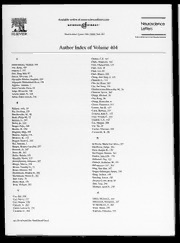
Neuroscience Letters 2006: Vol 404 Index

Statutes of the Province of Ontario 2006 pt. 3
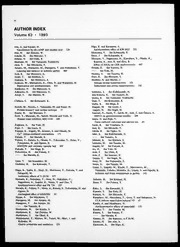
Japanese Journal of Pharmacology 1993: Vol 63 Index
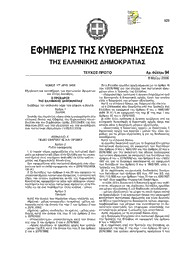
Greek Government Gazette: Part 1, 2006 no. 94

Filosofia for dummies

Laser: Bauformen, Strahlführung, Anwendungen

Living

DTIC ADA275351: Quantifying Absorption by Aquatic Particles: A Multiply Scattering Correction for Glass-Fiber Filters
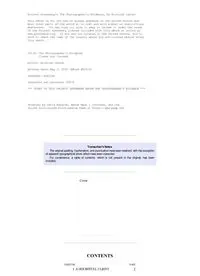
The Photographers Evidence or Clever but Crooked by Nicholas Carter

HAPPI July 2011
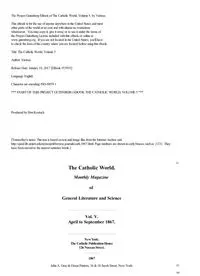
THE CATHOLIC WORLDVOL Vol V NO 25 April to September 1867
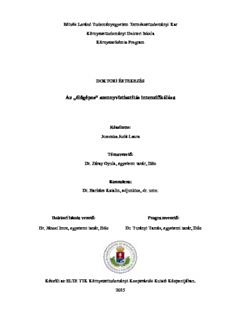
Az „élőgépes” szennyvíztisztítás intenzifikálása


